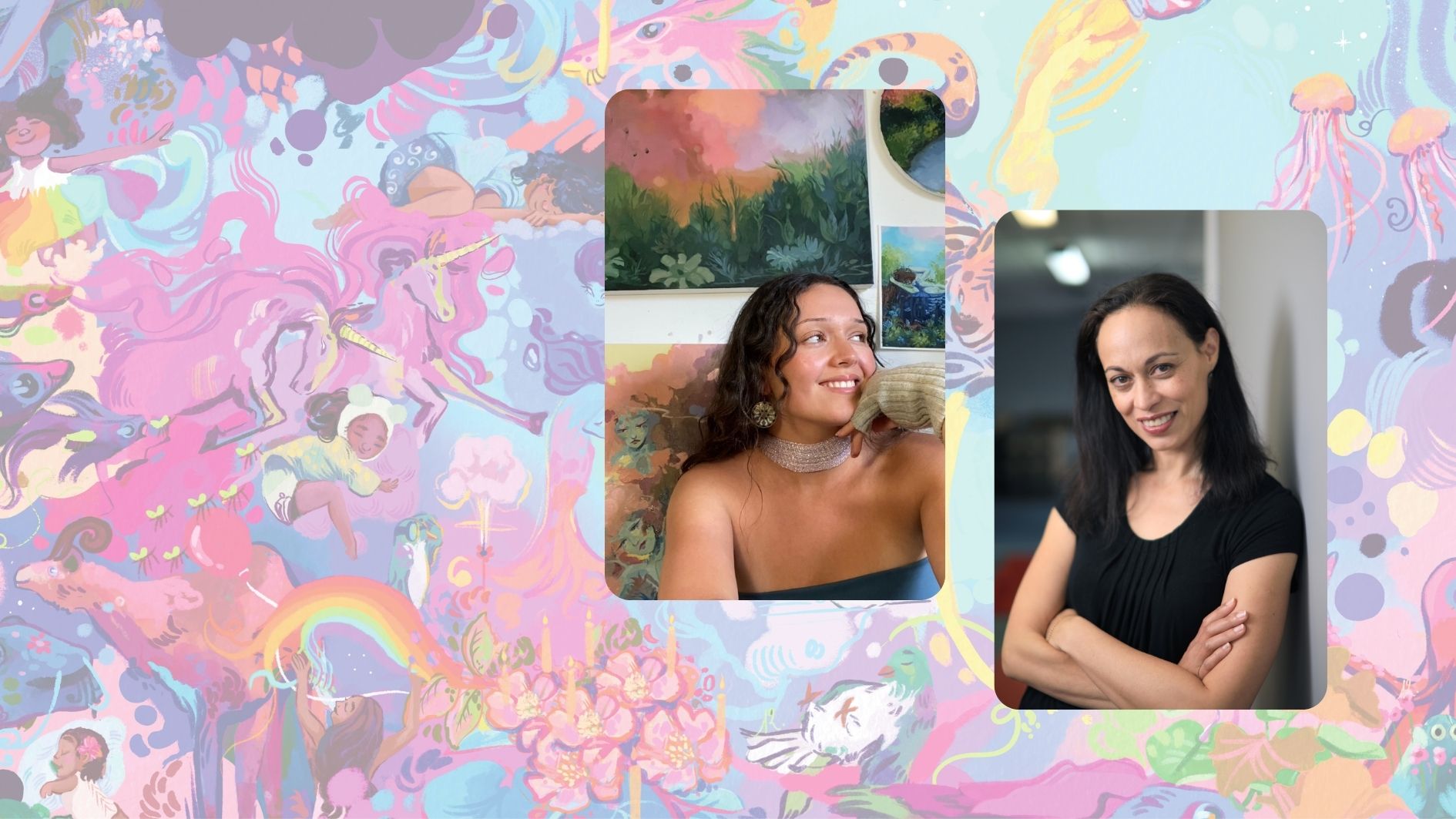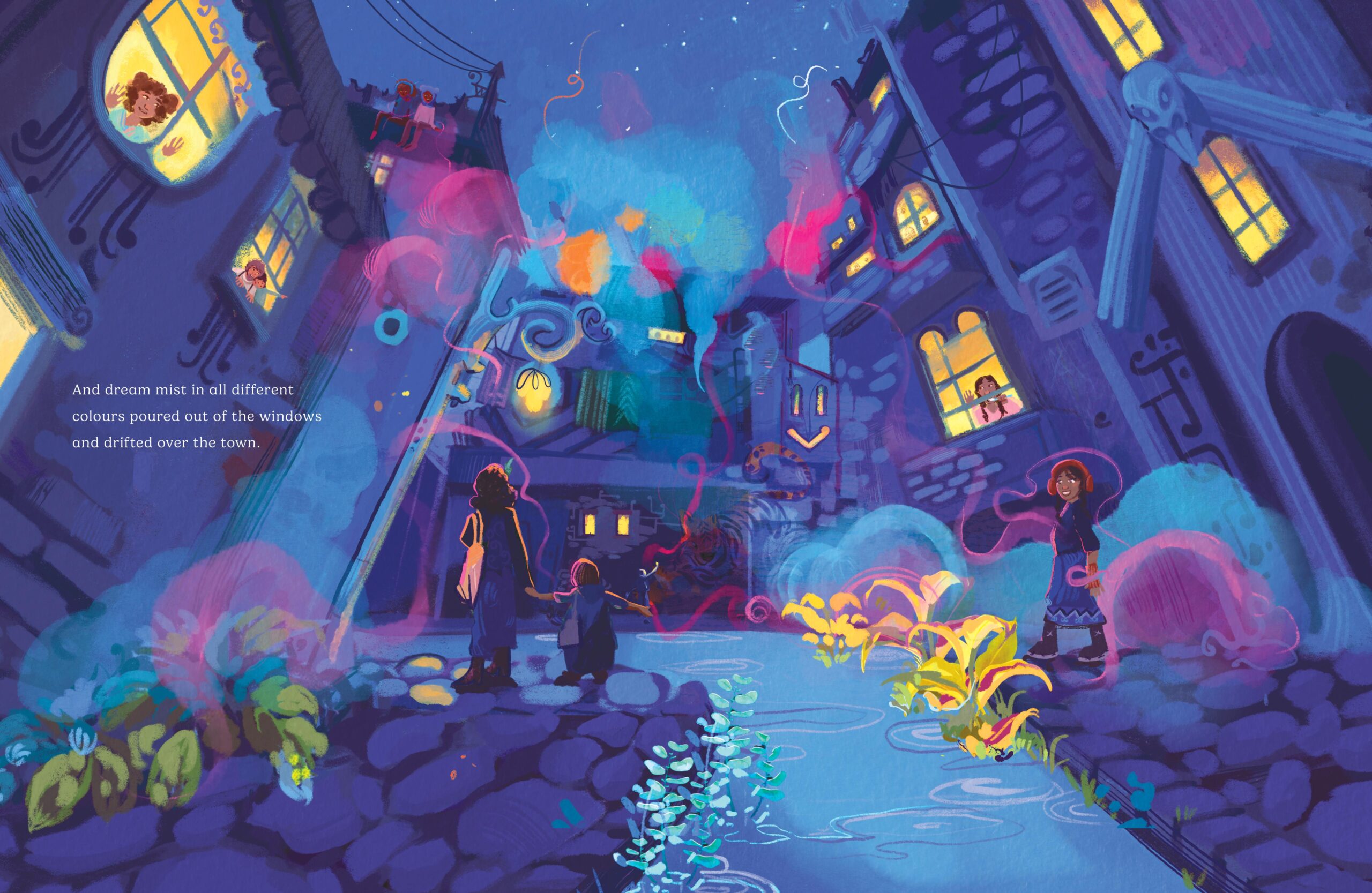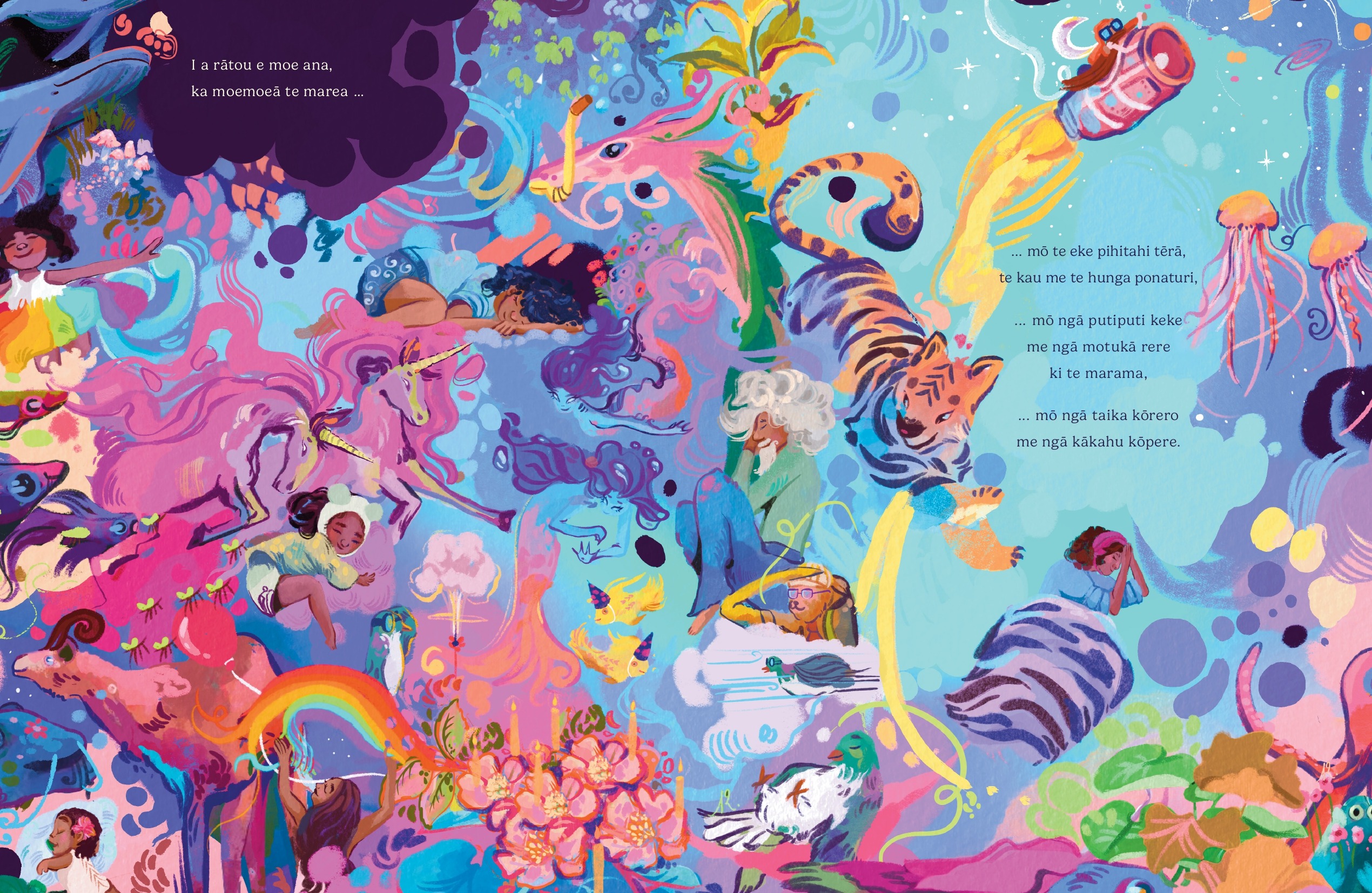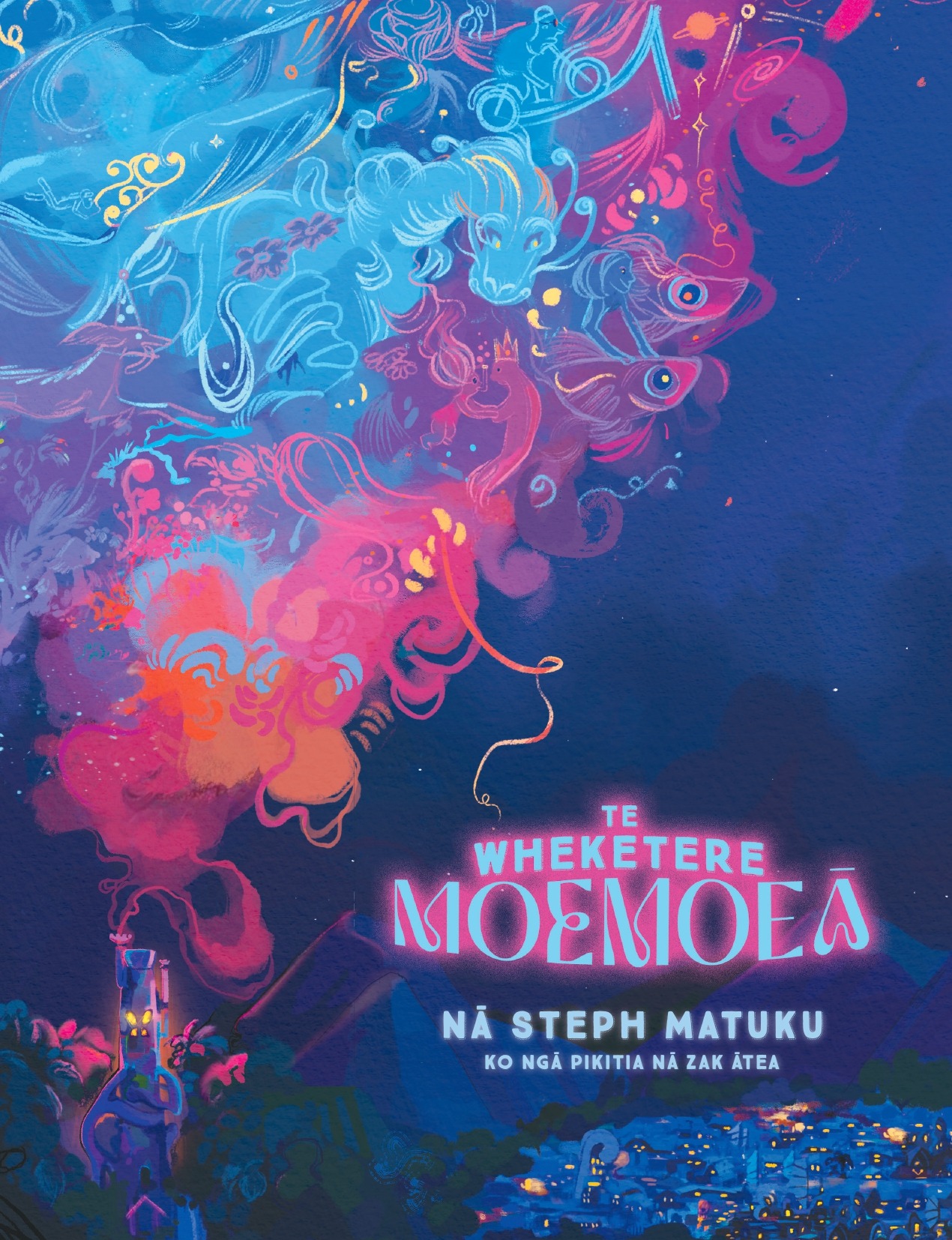Author Steph Matuku and illustrator Zak Ātea of The Dream Factory and Te Wheketere Moemoeā interview each other about their inspiration, careers, and dreams for the future.

Zak: What is your most treasured book you used to read as a child?
Steph: This is a trick question. They were all treasured. I still have many of them.
Z: What is your process like when creating a plot/storyline for your stories?
S: I used to just write on the fly, but I’ve come to realise the value of a decent outline. An outline means I can work faster, and most of the plot holes have been filled. If I have an outline, I can start writing as soon as I wake up. I can knock off 500 words in half an hour with a cup of tea in bed before I have to get the children ready for school. And even if I don’t write anything else that day, at least I’ve done 500 words. Without an outline, my morning words would be rubbish.
I also like to work on three or four things at once, so if I’m bored with one thing, I can work on something else, and when I don’t feel like doing that anymore, I flip over to something else. So, it never really feels like work and suddenly I’ve got three or four things done. All by avoidance and procrastination! Incredible.

Z: Are any of your characters/creatures based on real life people?
S: Yes and no! All my characters have bits and pieces of people I know, and bits and pieces of me. All the funny bits are me, lol. Also the tragic bits, sob.
Z: You’ve written for a range of ages and genres, all very whimsical in nature, but what is a genre that you haven’t explored yet that you would like to delve into?
S: I want to write the ultimate prepper doomsday novel. I love apocalyptic, dystopian landscapes, with characters defying all odds to stay alive, but I haven’t really had the space and opportunity to write one yet. I’m researching though. I have a water filter and a first aid kit, and I make my noodles in a Thermos.
The world needs more stories. Different stories, diverse stories, YOUR stories.
Steph Matuku
Z: What inspired you to write The Dream Factory?
S: The Dream Factory was inspired by the pandemic lockdown. I know some people had the time of their lives, making sourdough and learning languages and getting ripped doing press-ups or whatever, but I was still working from home, with two small children and I found it really hard. There’s a part in the book where nobody dreams anymore and their creativity dries up, and that’s kind of how I felt. But I guess my creativity was still there, just resting, waiting for the doors to open.
Z: What is your favourite part of being a writer/author?
S: I can work in my furry onesie. This is not a joke answer. My furry onesies are very important to me. They’re warm and cuddly and don’t pinch around the middle. If I had a regular 9 to 5 job, I’d have to wear proper clothes and do my hair—the horror. I wore my furry onesies when I was on a residency at the Michael King Writers Centre, and when tourists would crowd onto the balcony to take pictures, I’d stand behind them in the window with my furry onesie on, like a mysterious ghostly yeti. I bet I’ve made it into many a foreign family photo album.

Z: What’s some great advice for any young tamariki out there dreaming of becoming a writer/author?
S: Learn a trade instead. Lol, jokes. (Or is it?!)
But if you really want to do it, just do it! The world needs more stories. Different stories, diverse stories, YOUR stories. There’s no age barrier, there’s nothing stopping you. Write poems and lyrics, make music, paint the world, write books, comics, graphic novels, whatever. Express yourself. Tell us what you feel and what you’re thinking. Let us step inside your head and be a part of you. Help us dream your dreams and see the world through your eyes. Or just write something, and then throw it away! The process of writing is just as valid as the end result.
Also, if there’s someone that you don’t like, you can write them into a story and throw them into a fiery snake-pit or have them eaten by dinosaurs. All writers do this. It’s the best perk of the job.
Steph: What was your journey to becoming a professional illustrator?
Zak: My journey to becoming an illustrator was quite out of the blue. I’d done art and drawing my entire life but I never imagined myself pursuing it. I’m not even sure I knew being an illustrator could be a potential career because I had always been an oil painter, I thought that was all being an artist was. Art was something I did in highschool and loved, it was a safe way for me to explore my whakapapa, and to harness my crazy imagination. Originally I was going to pursue music after school, as I had performed in musicals and been in bands throughout my schooling, but did a complete 180 and took a chance on a design degree at Massey University. It was there that I drew my first ever illustrated character, and I haven’t stopped illustrating since. I’ve been in love with it from then on, and have just spread my work far and wide through the connections I made being a student.
Children are the future for upholding arts, design and culture that make our world a better place.
Zak Ātea
S: Where do you work and what is your typical working day like?
Z: I’m lucky that I can have an extra room in my house that is a big white-walled studio space, so that is primarily where I do a lot of my personal and client work. Sometimes I get out and visit other artist friends and their spaces for inspiration, but it’s nice to have a home studio for peace. Typically I start my morning off doing personal painting, sketching, crafting, and general hobby nonsense without the pressures of having it be for a client or purpose, then I usually work on whatever client pieces I have in the afternoons/later in the evening. I get the most productive later in the day so my work day is more like 11am to 7pm!
S: Your illustrations are so dreamy and evocative. What type of art do you like to do the most and what would you like to explore in the future?
Z: I love to oil paint the most, I think over the years of experimenting with digital media I’ve tried to find a good balance where that style comes through in my digital illustrative work. I spent a lot of time designing my own brushes to get that hand painted, mark-making look that we all love when you use traditional media and methods. It helps with that romanticism/surrealism balance I admire in other people’s artworks. In the future I really wanna go complete left field and integrate my illustration into sculpture. I’m fascinated by the 3D art world and how illustration can fit into that space.

S: What’s the best and worst advice you’ve ever had as an artist?
Z: The best advice: “If you don’t try it, how do you know it won’t work.” Can apply to lots of things, not just your work. The worst advice: “Why would you want to pursue art? Not a lot of money in that field I’ve heard.” Many people have and will say this to you. Ignore it.
S: Which is your favourite illustrated page in The Dream Factory, and why?
Z: It’s a tie between the second and last spreads. This was my first time experimenting with illustrating buildings/a township and I’m just really proud of how they came out with the vibrant colours, it sets the scene for the village and its quirky inhabitants, lots to spot.
The arts and culture have just as much importance and worth as any other career kids can pursue
Zak Ātea
S: If you could make the government do one thing to help young people wanting a career in the arts, what would it be?
Z: Funding boosts for the arts in schools, especially high school. Children are the future for upholding arts, design and culture that make our world a better place. If there was more funding and more encouragement I think it would help dismantle the stigma that you won’t make it/won’t make a liveable income when pursuing the arts, which is completely incorrect and manages to scare a lot of young people into more normalised career paths. The arts and culture have just as much importance and worth as any other career kids can pursue, if you take a moment to really look around you, everything you see, use, listen and interact with, has been touched in some big or small way by the art world, and that is important.
S: I find it hard to write when I’m worried or sad. Can you art when you’re feeling low? How do you push on through when you have little motivation?
Z: I find I’m the opposite, some of my best work happens when I’m low. I’m a highly sensitive individual, so I’ve learnt to use that to my advantage, and it really fuels my work. However I know when I’m fighting a losing battle, and I always make sure I never push my way through anything to get something done, that’s usually when my work goes bad. If I lack motivation, I go do something else entirely, usually it involves going outside, lying down and listening to music. Sometimes enriching yourself with something someone else has created resets your brain from spiralling, you can just observe. I find once I come back inside I’m factory reset and can try creating little by little again until it passes.

The Dream Factory
Written by Steph Matuku
Illustrated by Zak Ātea
Published by Huia
RRP: $22.00

Te Wheketere Moemoeā
Nā Steph Matuku
Ko ngā pikitia nā Zak Ātea
Published by Huia
RRP: $22.00





